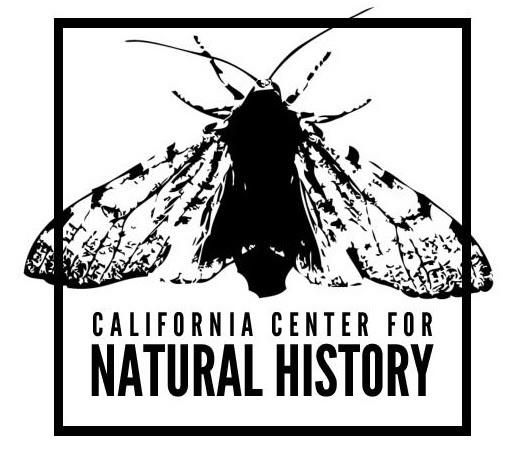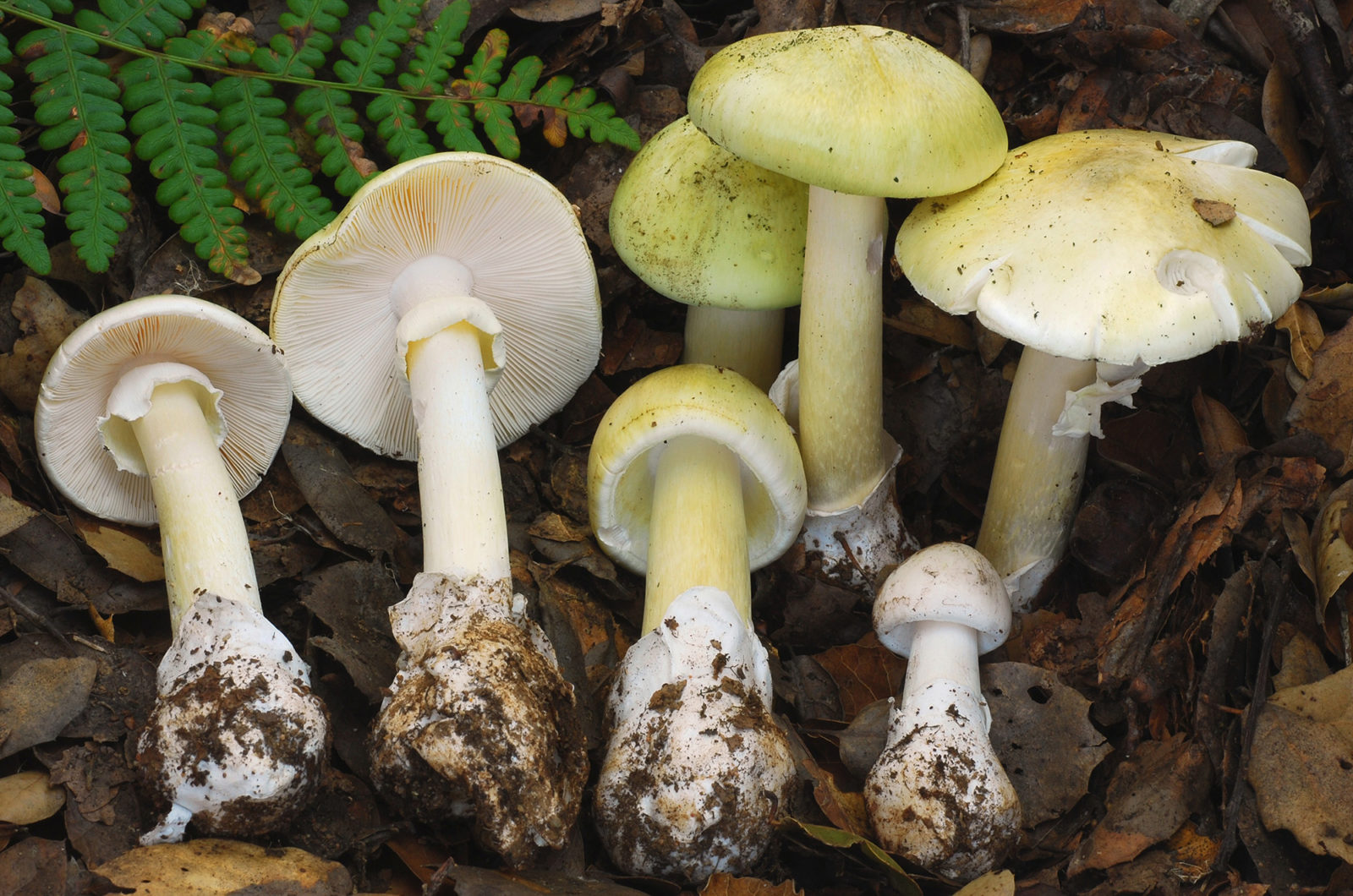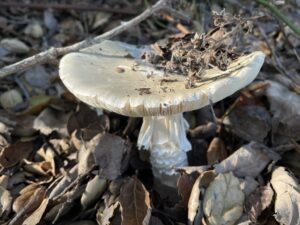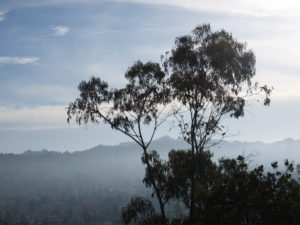I recently read about the spread of Death Cap mushrooms in North America — should I be concerned?
Death Caps! An infamous mushroom if ever there was one, and rightly so.
Invasive, abundant, showy, and potentially deadly toxic. A recent article in The Atlantic has brought a renewed surge of attention to this species.
But do we fear them for the right reasons? Or do they occupy an outsize role in the public imagination?
First, a bit of history: death caps (Amanita phalloides) are native to Eurasia (where they are widely distributed), and arrived in America sometime around the 1930s. The first definite records from this side of the Atlantic came from Central California, but the species has since spread rapidly throughout the West. It now reaches north to British Columbia, south to San Diego, and into the Sierra Nevada. It’s only a matter of time until it hops the border into northern Baja California.
All of this is of concern from the perspective of human health and safety. Although year-to-year variation is high, death caps have been involved in human poisonings in the United States on the order of about once per year over the decades since the species was introduced here. The α-amanitin proteins contained in the flesh of death caps survive the heat of cooking, and 10-24 hours after ingestion, severely disrupt liver and kidney functioning. In the worst-case scenarios this is followed by dehydration, multiple organ failure, and painful death.
None of this is pleasant, and all of it should be taken seriously. Mexican and Southeast Asian immigrants account for a disproportionate share of those poisoned by death caps, since similar-looking edible species are found and gathered in Mexico and Southeast Asia. Better education, cautionary signage, and improved diagnosis and treatment are all worthwhile avenues to pursue.
But although death caps are attention-grabbing in the sense that they can cause gruesome deaths, and wild mushrooms are unfamiliar to most Americans, they are truly a minuscule risk in comparison to those incurred by driving, using power tools, or even taking a shower. Mundane, diffuse, familiar causes of injury and death are much harder for us to take seriously, precisely because they are less lurid. And this is a problem.

Even solely from the perspective of human health, there is an opportunity cost incurred by spending too much time focused on death caps. If one were to look for a fungus to worry about, one would need to look no further than the nearest hospital; the yeast Candida auris is a rapidly-spreading pathogen, now found in hospital settings around the world. It can cause mortality rates greater than 50 percent among immunocompromised patients, and is resistant to the four major classes of antifungal compounds. Monitoring the spread of this pathogen has been hampered by the difficulty of accurate detection and diagnosis.
Or what about Aspergillus flavus? This fungus colonizes siloed grains and other crops, especially those that are rich in oil, like peanuts. In warm conditions, the fungus can contaminate food with a potent carcinogen called aflatoxin. This problem is only likely to increase in scope and scale as the climate warms in places like Europe, and as populations grow in tropical areas where many of the staple crops are oil-rich and prone to spoilage due to the prevailing warm and humid climate. When the risk isn’t from acute disease and mortality, but rather diffuse and long-term, it can be harder for humans to take seriously. In a more general sense, these kinds of risks are of tremendous concern from a civilization-level perspective. From climate change to automation, humans have a bad track record of myopia.
To return to death caps, what if the broader negative impacts of this species have little to do with human health?
Remember, they are an exotic species in the Western United States, and are rapidly increasing their geographic range and range of habitats. Are they outcompeting or excluding native species in the process? How would we know? We have done almost nothing to monitor changes in the assemblage of mushroom species in areas before and and after the incursion of death caps.
Further Reading
Pringle et al, “The ectomycorrhizal fungus Amanita phalloides was introduced and is expanding its range on the west coast of North America,” Molecular Biology 2009
Lockhart et al, “Simultaneous emergence of multidrug-resistant Candida auris on 3 continents confirmed by whole-genome sequencing and epidemiological analyses,” Clinical Infectious Diseases 2017
Battalani et al, “Aflatoxin B1 contamination in maize in Europe increases due to climate change,” Scientific Reports 2016
Nor has there been much research to determine if there are feasible strategies to manage the abundance of A. phalloides. Some researchers have hypothesized that those mushroom species which produce large numbers of aboveground biomass (like death caps) are poor soil competitors, and rely on year-to-year heavy spore production to maintain their foothold in a given habitat. Which might suggest that intensive fruitbody removal efforts could produce declines in abundance if kept up for sufficient periods of time.
However, on a state-level scale, this is probably not feasible, which leaves us to ask: if the spread of death caps is inevitable, can we at least learn what the impacts are on our native fungi? This requires close, sustained attention to areas where these fungi don’t yet occur, and continued monitoring over time. Hopefully, land managers and conservationists alike will find common ground to establish such monitoring efforts sooner than later – the baseline is already largely lost.
While there is no reason not to pay attention to death caps as a source of fascination and trepidation, it is worth remembering that there are less immediately obvious aspects of this species’ ecology, and the larger world of harmful human-fungi interactions that deserve a greater share of your concern.

Ask the Naturalist is a reader-funded bimonthly column with the California Center for Natural History that answers your questions about the natural world of the San Francisco Bay Area. Have a question for the naturalist? Fill out our question form or email us at atn at baynature.org!





